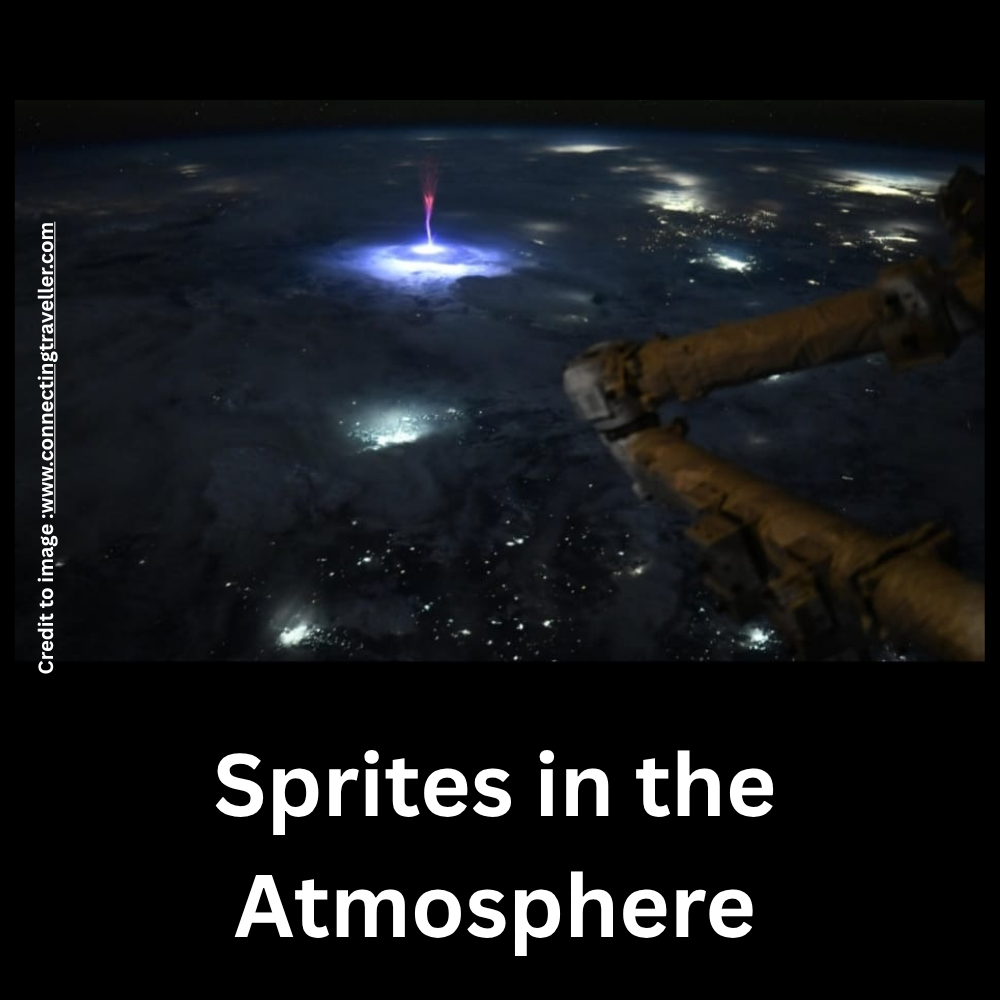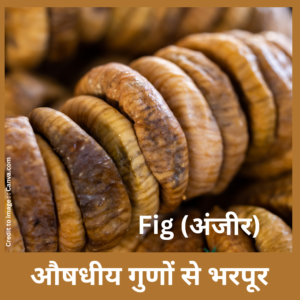Prakriti Darshan | Nature & Environment News | 05 July 2025
“Just. Wow.” — These were the first words of awe from Nichole “Vapor” Ayers, astronaut and pilot aboard the International Space Station, as she witnessed one of the rarest atmospheric events on Earth — a sprite, scientifically known as a Transient Luminous Event (TLE). This article explains about the Sprites in the Atmosphere.
In a post that has since gone viral on X (formerly Twitter), Ayers shared a dazzling photo of a sprite above the thunderclouds while passing over Mexico and the southern U.S. early in the morning. Her exact words:
“Just. Wow. As we went over Mexico and the U.S. this morning, I caught this sprite. Sprites are TLEs or Transient Luminous Events, that happen above the clouds and are triggered by intense electrical activity in the thunderstorms.”.
What Are Sprites in the Atmosphere?
Sprites are massive but fleeting electrical discharges that occur high above thunderstorm clouds, typically in the mesosphere (50–90 km altitude). Unlike lightning that strikes downward, sprites reach upward toward space, and often take shapes like jellyfish or columns, glowing red or orange.
They’re classified under Transient Luminous Events (TLEs) — a category that also includes blue jets, elves, and halos — phenomena that have only recently been studied thanks to space-based observation.
The Science Behind Transient Luminous Events (TLEs)
⚡ Table 1: Classification of TLEs
| TLE Type | Altitude (km) | Color | Shape/Appearance | Cause |
| Sprites | 50–90 | Red-orange | Jellyfish, columns | Positive cloud-to-ground lightning |
| Blue Jets | 20–50 | Blue | Cone-like | Lightning leader breakout |
| Elves | ~100 | Reddish ring | Expanding disk | Electromagnetic pulse (EMP) |
Source: NASA Atmospheric Science Division
Why Nichole Ayers’ Photo Is So Remarkable
Sprites are incredibly difficult to capture, especially in their full form. Most sprite observations are limited to scientific missions or lucky ground-based sightings. The image posted by Ayers offers an unprecedented view from space, adding to the growing evidence and interest in TLE research.
Link to Original Post:
Relevance of Sprites to Earth’s Climate and Environmental Study
Though sprites don’t impact weather directly, they are important for understanding upper atmospheric dynamics, electric fields, and energy transfer between Earth and space. These insights can help in:
Predicting electromagnetic disturbances
Studying the impact on radio and satellite communication
Understanding climate and ozone interactions
Table 2: Comparison – Sprites vs Traditional Lightning
| Feature | Sprites | Traditional Lightning |
| Duration | <1 millisecond | 100 milliseconds |
| Color | Red-orange | White-blue |
| Direction | Upward from cloud tops | Downward to Earth |
| Location | Mesosphere (50–90 km) | Troposphere (0–12 km) |
| Detection | Rare, from space or high land | Common, seen from ground |
Cultural and Scientific Significance :Sprites in the Atmosphere
Sprites have fascinated both scientists and skywatchers. Some ancient myths and indigenous beliefs even describe red flashes in the sky, possibly referring to such unexplained events before modern science validated them.
Now, with astronauts like Nichole Ayers sharing real-time evidence, a new generation is becoming aware of the mystery and magic above the clouds.
FAQs About Sprites in the Atmosphere
Q1: What is a sprite in the sky?
A: A sprite is a type of luminous electrical discharge that occurs high above thunderstorm clouds, typically red in color and lasting a few milliseconds.
Q2: Are sprites dangerous?
A: No, sprites occur far above where commercial planes fly and don’t pose a threat to life or aviation.
Q3: Why are sprites hard to photograph?
A: Because of their brief duration, altitude, and the need for special lighting conditions or equipment.
Q4: Who is Nichole “Vapor” Ayers?
A: Nichole Ayers is a NASA astronaut and U.S. Air Force pilot who recently captured a sprite from the ISS.
Q5: Can we see sprites from Earth?
A: Very rarely, and usually only from high altitudes during clear night skies with active thunderstorms.
References
- NASA – Atmospheric Phenomena: Transient Luminous Events (https://science.nasa.gov)
- ESA – Sprites and Upper Atmosphere Lightning (www.esa.int)
- American Geophysical Union (AGU) Journal – TLE Studies and Observations
- Nichole Ayers’ Official Post via X/Twitter (@AstroVapor)
- NOAA – Space Weather Prediction and High Atmosphere Events
PRAKRITI DARSHAN-NATURE AND ENVIRONMENT MAGAZINE
Prakriti Darshan is a leading Hindi-language magazine and digital platform dedicated to raising public awareness on vital issues related to nature, biodiversity, climate change, sustainable development, and environmental conservation. This magazine represents a unique blend of science, society, and sensitivity—offering a common platform for researchers, students, NGOs, policymakers, nature lovers, and conscious citizens alike.
With thought-provoking articles, inspiring stories, environmental research, impactful projects, and policy perspectives, Prakriti Darshan is a transformative journey toward a greener and more sustainable future.
Let us come together to protect and preserve our planet for generations to come. 🌿🌍
Join us in our mission to protect and celebrate the planet. 🌏💚
Click for more information
- Visit www.prakritidarshan.com for Free Magazine ,Free membership benefits ,offered price magazine @ Rs.1 or Rs.11 only and more ……
- 🎗️Sponsor Prakriti Darshan Magazine – Support our environment mission.
- 📚 Explore the Environment Magazine – Read our latest and past issues.
- ✍️ Read Editor’s Article or Blog – Insightful thoughts from our editorial desk.
- 🌱 Join Membership – Be part of India’s leading green community.
- 🤝 Become an NGO Impact Story Partner – Share your grassroots impact nationwide.
- 🏢 Become a Company Partner – Showcase your CSR, ESG, or sustainability work.
- 👤 Become an Individual Partner – Volunteer, write, and raise your green voice.
- 📢 Advertise with Us – Reach eco-conscious readers across India.
- Eco Trails Newsletter
- Donate for “Hari Ho Vashundhara & Har school Hariyali “ Plantation campaign Associated Partner NGO :GDSS NGO www.gdssngo.org
BALA DATT SHARMA,
MANAGING EDITOR ,
PRAKRITI DARSHAN-NATURE AND ENVIRONMENT MAGAZINE
- Yamuna River- Lifeline of North India :A Scientific, Agricultural, and Environmental Perspective - July 14, 2025
- Jurassic World Rebirth Breaks Box Office Records : Global Box Office Revenue $1.5 Billion (And rising) Globally with a Roaring Environmental Message - July 14, 2025
- African Elephant: Facts, Types, Scientific Data, and Why Their Survival Matters for Our Planet - July 13, 2025





